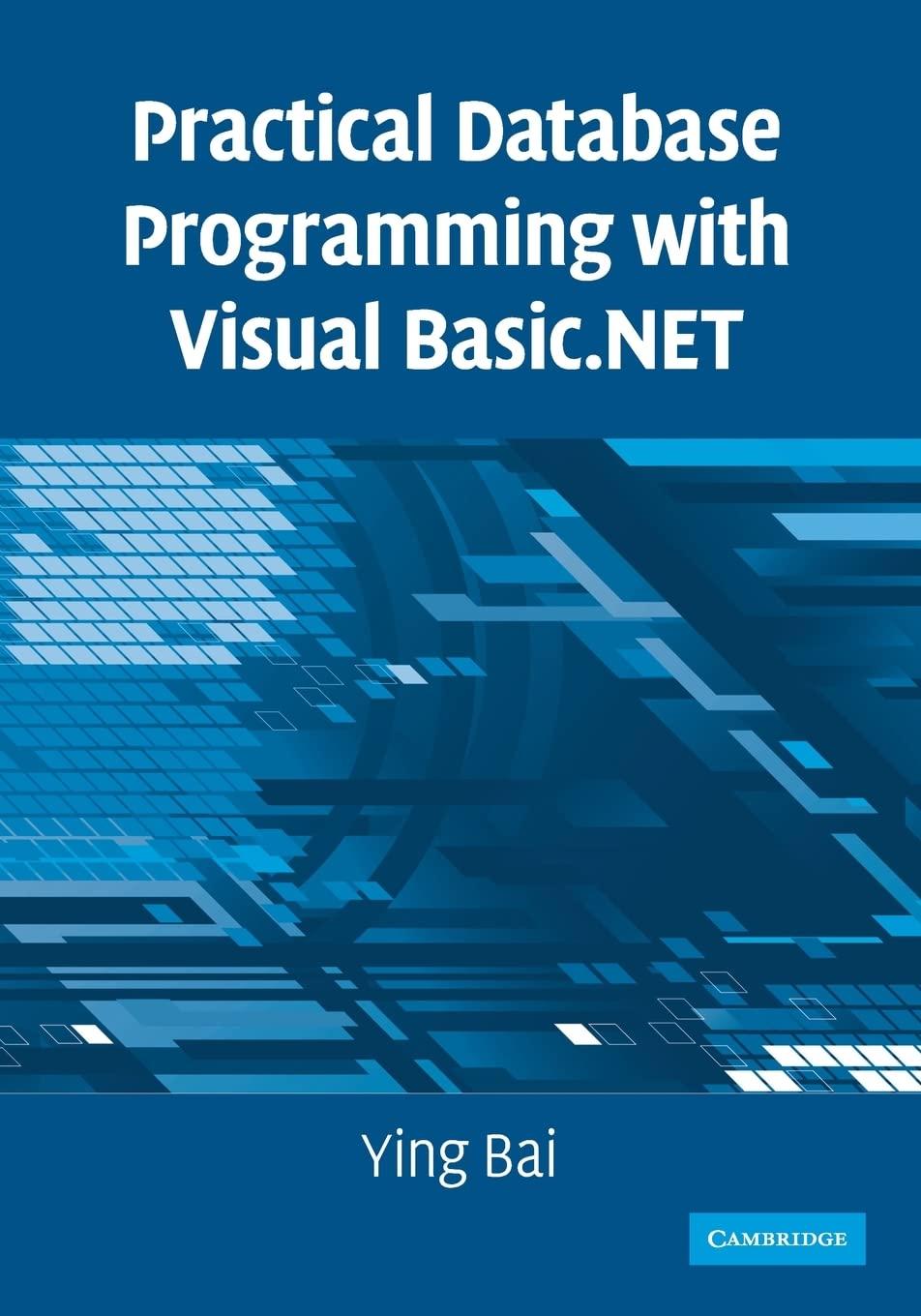Question
Packet Tracer - Network Representation The network model in this activity incorporates many of the technologies that you will master in your CCNA studies. It
Packet Tracer - Network Representation
The network model in this activity incorporates many of the technologies that you will master in your CCNA studies. It represents a simplified version of how a small to medium-sized business network might look. Feel free to explore the network on your own. When you are ready, proceed through the following steps and answer the questions.
Note: It is not important that you understand everything you see and do in this activity. Feel free to explore the network on your own. If you wish to proceed more systematically, follow the steps below. Answer the questions to the best of your ability.
- 1: Identify common components of a network as represented in Packet Tracer.
The icon toolbar at the bottom left hand corner has various categories of networking components. You should see categories that correspond to intermediary devices, end devices, and media. The Connections category (with the lightning bolt icon) represents the networking media supported by Packet Tracer. There is also an End Devices category and two categories specific to Packet Tracer: Custom Made Devices and Multiuser Connection.
Questions:
List the intermediary device categories.
Type your answers here.
Without entering into the internet cloud or intranet cloud, how many icons in the topology represent endpoint devices (only one connection leading to them)?
Type your answers here.
Without counting the two clouds, how many icons in the topology represent intermediary devices (multiple connections leading to them)?
Type your answers here.
How many end devices are not desktop computers?
Type your answers here.
How many different types of media connections are used in this network topology?
Type your answers here.
- 2: Explain the purpose of the devices.
Questions:
- In Packet Tracer, only the Server-PT device can act as a server. Desktop or Laptop PCs cannot act as a server. Based on your studies so far, explain the client-server model.
Type your answers here.
- List at least two functions of intermediary devices.
Type your answers here.
- List at least two criteria for choosing a network media type.
Type your answers here.
- 3: Compare and contrast LANs and WANs.
Questions:
- Explain the difference between a LAN and a WAN. Give examples of each.
Type your answers here.
- In the Packet Tracer network, how many WANs do you see?
Type your answers here.
- How many LANs do you see?
Type your answers here.
- The internet in this Packet Tracer network is overly simplified and does not represent the structure and form of the real internet. Briefly describe the internet.
Type your answers here.
- What are some of the common ways a home user connects to the internet?
Type your answers here.
- What are some common methods that businesses use to connect to the internet in your area?
Type your answers here.
- Question
Now that you have had an opportunity to explore the network represented in this Packet Tracer activity, you may have picked up a few skills that you would like to try out. Or maybe you would like the opportunity to explore this network in more detail. Realizing that most of what you see and experience in Packet Tracer is currently beyond your skill level, here are some challenges you might want to attempt. Do not worry if you cannot do them all. You will be a Packet Tracer master user and network designer soon enough.
- Add an end device to the topology and connect it to one of the LANs with a media connection. What else does this device need to send data to other end users? Can you provide the information? Is there a way to verify that you correctly connected the device?
- Add a new intermediary device to one of the networks and connect it to one of the LANs or WANs with a media connection. What else does this device need to serve as an intermediary to other devices in the network?
- Open a new instance of Packet Tracer. Create a new network with at least two LANs connected by a WAN. Connect all the devices. Investigate the original Packet Tracer activity to see what else you might need to do to make your new network functional. Record your thoughts and save your Packet Tracer file. You may want to revisit your network later after you have mastered a few more skills.
End of Document
Step by Step Solution
There are 3 Steps involved in it
Step: 1

Get Instant Access to Expert-Tailored Solutions
See step-by-step solutions with expert insights and AI powered tools for academic success
Step: 2

Step: 3

Ace Your Homework with AI
Get the answers you need in no time with our AI-driven, step-by-step assistance
Get Started


